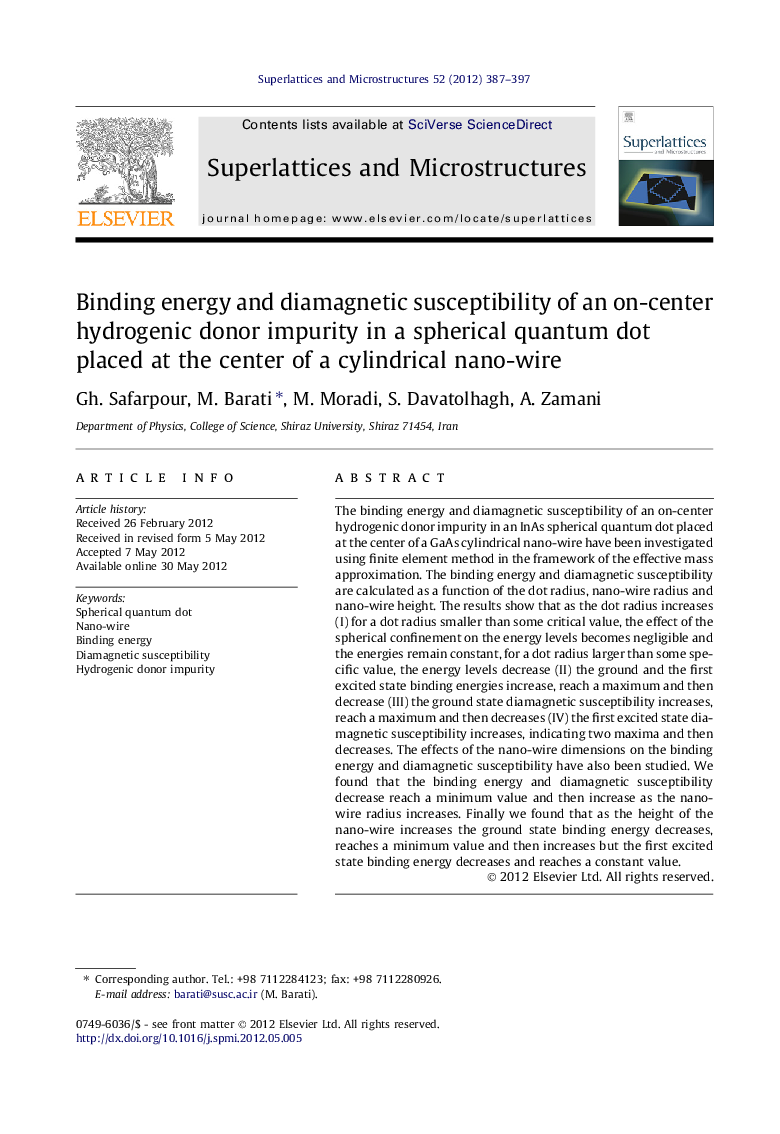| Article ID | Journal | Published Year | Pages | File Type |
|---|---|---|---|---|
| 1554026 | Superlattices and Microstructures | 2012 | 11 Pages |
The binding energy and diamagnetic susceptibility of an on-center hydrogenic donor impurity in an InAs spherical quantum dot placed at the center of a GaAs cylindrical nano-wire have been investigated using finite element method in the framework of the effective mass approximation. The binding energy and diamagnetic susceptibility are calculated as a function of the dot radius, nano-wire radius and nano-wire height. The results show that as the dot radius increases (I) for a dot radius smaller than some critical value, the effect of the spherical confinement on the energy levels becomes negligible and the energies remain constant, for a dot radius larger than some specific value, the energy levels decrease (II) the ground and the first excited state binding energies increase, reach a maximum and then decrease (III) the ground state diamagnetic susceptibility increases, reach a maximum and then decreases (IV) the first excited state diamagnetic susceptibility increases, indicating two maxima and then decreases. The effects of the nano-wire dimensions on the binding energy and diamagnetic susceptibility have also been studied. We found that the binding energy and diamagnetic susceptibility decrease reach a minimum value and then increase as the nano-wire radius increases. Finally we found that as the height of the nano-wire increases the ground state binding energy decreases, reaches a minimum value and then increases but the first excited state binding energy decreases and reaches a constant value.
Graphical abstractIn this paper the binding energies and diamagnetic susceptibility of an on-center hydrogenic impurity placed at a spherical quantum dot, confined at the center of a cylindrical nano-wire have been calculated.Figure optionsDownload full-size imageDownload as PowerPoint slideHighlights► A spherical quantum dot which is placed at the center of a cylindrical nano-wire is considered. ► A hydrogenic donor impurity is considered at center of the quantum dot. ► The finite element method has been used to solve Schrodinger equation. ► Binding energy is calculated as a function of dot radius, nano-wire radius and nano-wire height. ► Diamagnetic susceptibility is also calculated as a function of dot and nano-wire radii.
